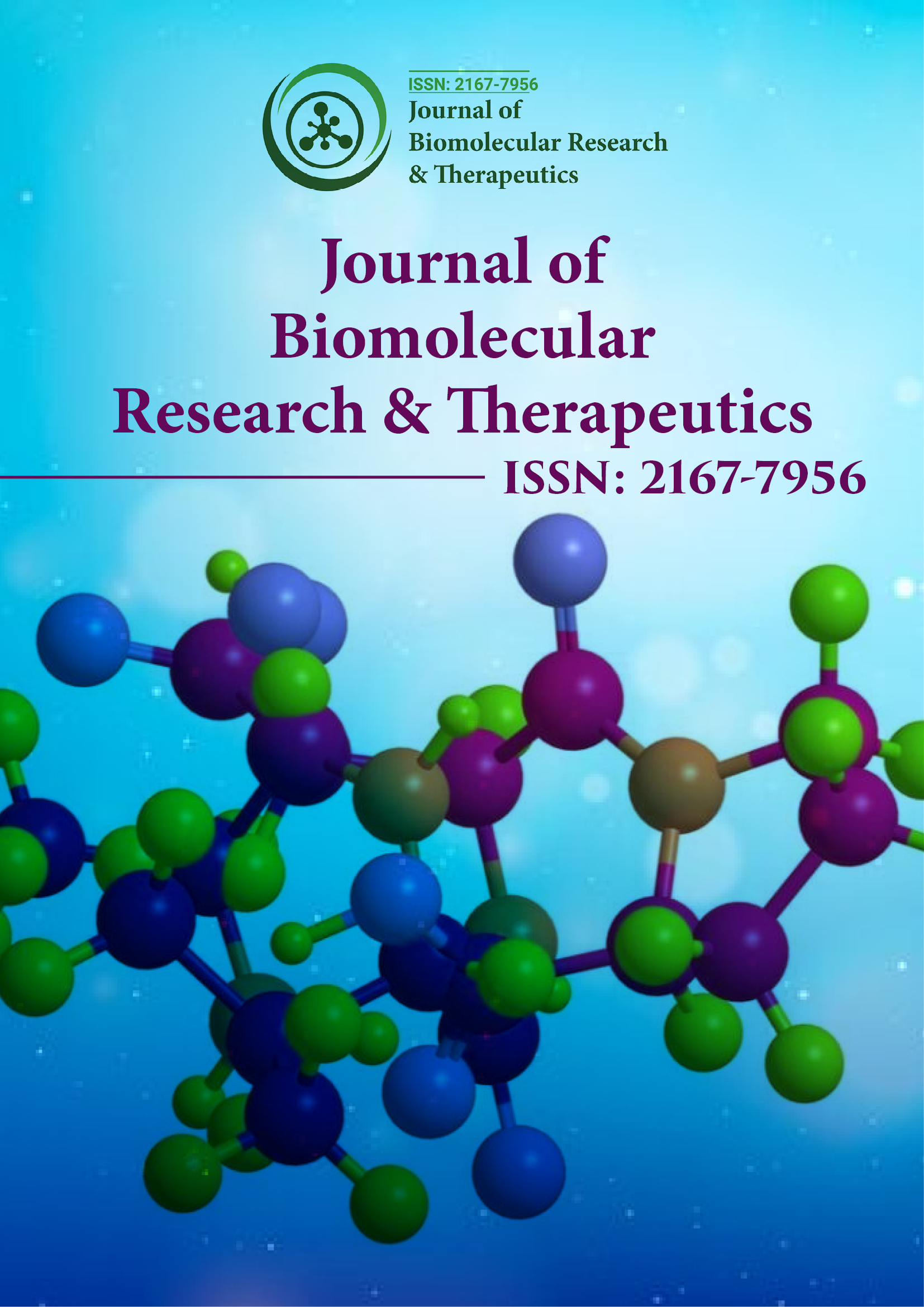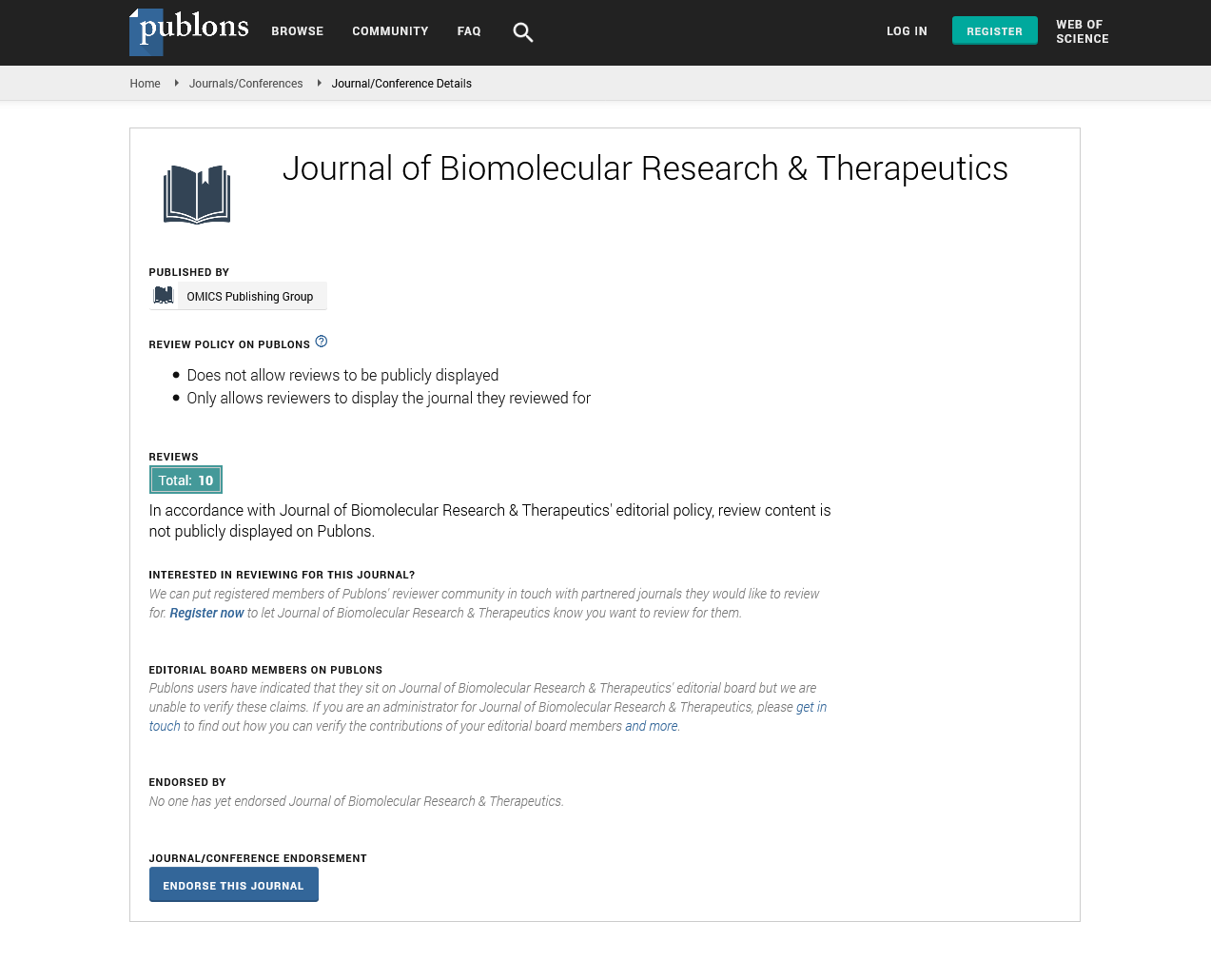Indexed In
- Open J Gate
- Genamics JournalSeek
- ResearchBible
- Electronic Journals Library
- RefSeek
- Hamdard University
- EBSCO A-Z
- OCLC- WorldCat
- SWB online catalog
- Virtual Library of Biology (vifabio)
- Publons
- Euro Pub
- Google Scholar
Useful Links
Share This Page
Journal Flyer

Open Access Journals
- Agri and Aquaculture
- Biochemistry
- Bioinformatics & Systems Biology
- Business & Management
- Chemistry
- Clinical Sciences
- Engineering
- Food & Nutrition
- General Science
- Genetics & Molecular Biology
- Immunology & Microbiology
- Medical Sciences
- Neuroscience & Psychology
- Nursing & Health Care
- Pharmaceutical Sciences
Opinion Article - (2024) Volume 13, Issue 5
Advanced Imaging and Statistical Analysis of Biomolecular Films: Insights into Structure and Function
Baranov Yurjevich*Received: 30-Sep-2024, Manuscript No. BOM-24-27790; Editor assigned: 02-Oct-2024, Pre QC No. BOM-24-27790 (PQ); Reviewed: 16-Oct-2024, QC No. BOM-24-27790; Revised: 23-Oct-2024, Manuscript No. BOM-24-27790 (R); Published: 30-Oct-2024, DOI: 10.35248/2167-7956.24.13.408
Description
Biomolecular films, thin layers of biological molecules assembled on surfaces, are essential in fields such as biomedicine and nanotechnology. Applications ranging from biosensors to drug delivery systems highlight the importance of understanding their structure. Analyzing these films requires advanced techniques to capture their intricate molecular organization. Advanced imaging methods combined with statistical analysis have transformed this field, providing deep insights into the morphology, composition and dynamics of biomolecular films.
Visualizing the nanoscale features of biomolecular films is challenging due to their structural complexity. These films, often composed of proteins, lipids, polysaccharides, or nucleic acids, depend on factors like molecular interactions and surface chemistry. Advanced imaging techniques, such as Atomic Force Microscopy (AFM), cryo-Electron Microscopy (cryo-EM) and fluorescence microscopy, have proven invaluable in tackling these challenges, each offering complementary insights into film structures.
AFM is a fundamental tool for analyzing biomolecular films. It maps surface topography at nanometer precision by scanning a sharp probe across a sample. AFM is particularly effective in characterizing physical features like surface roughness, molecular packing and layer thickness. Innovations in AFM, including high-speed imaging and force spectroscopy, have enhanced its ability to study dynamic processes within biomolecular films. For example, AFM has revealed the organization of lipid bilayers and protein monolayers, shedding light on their mechanical properties and assembly.
Cryo-EM has become a leading method for imaging biomolecular films in their near-native state. By rapidly freezing samples, cryo-EM preserves the delicate structures of biomolecules, enabling high-resolution imaging without traditional artifacts. This technique has been critical for understanding the 3D architecture of complex biomolecular films, such as membrane proteins and extracellular matrices. Advances in image processing and detector technologies have further boosted cryo-EM’s resolution and accuracy, making it ideal for studying intricate film structures.
Super-resolution fluorescence microscopy techniques, like STED and PALM/STORM, have revolutionized the visualization of biomolecular films by breaking the diffraction limit of conventional microscopy. These methods enable researchers to resolve molecular arrangements within films at the nanometer scale. Fluorescent labeling facilitates the selective visualization of specific components, such as proteins or nucleic acids, making it indispensable for studying heterogeneous films where multiple species coexist and interact.
While advanced imaging techniques provide detailed data, interpreting them often requires robust statistical analysis. Statistical tools allow researchers to extract meaningful information, quantify features and understand the principles underlying biomolecular film assembly and function.
One critical application of statistical analysis is in quantifying film morphology. Techniques like Fourier transform and wavelet analysis identify patterns and hierarchical structures within biomolecular films, revealing how components are organized, from nanoscale domains to larger assemblies. For example, protein film studies have used statistical methods to detect packing arrangements and quantify structural order or disorder.
Dynamic processes within biomolecular films are another focus of statistical analysis. Time-resolved imaging techniques, such as high-speed AFM and live-cell fluorescence microscopy, generate large datasets capturing film behavior over time. Statistical tools, including trajectory analysis and machine learning, identify patterns in these datasets, such as molecular diffusion, film growth, or responses to environmental stimuli. These insights are invaluable for applications like biosensing, where dynamic interactions are key.
In conclusion, the structure of biomolecular films determines their function and influences their role in diverse applications. Advanced imaging techniques like AFM, cryo-EM and super-resolution fluorescence microscopy have revolutionized film visualization, while statistical analysis has extracted important insights from complex datasets. Together, these approaches offer a comprehensive toolkit for exploring the nanoscale world of biomolecular films. As imaging and analytical methods continue to evolve, the ability to unravel the intricate details of these systems will expand, driving progress in both fundamental research and practical applications.
Citation: Yurjevich B (2024). Advanced Imaging and Statistical Analysis of Biomolecular Films: Insights into Structure and Function. J Biomol Res Ther. 13:408.
Copyright: © 2024 Yurjevich B. This is an open-access article distributed under the terms of the Creative Commons Attribution License, which permits unrestricted use, distribution, and reproduction in any medium, provided the original author and source are credited.

